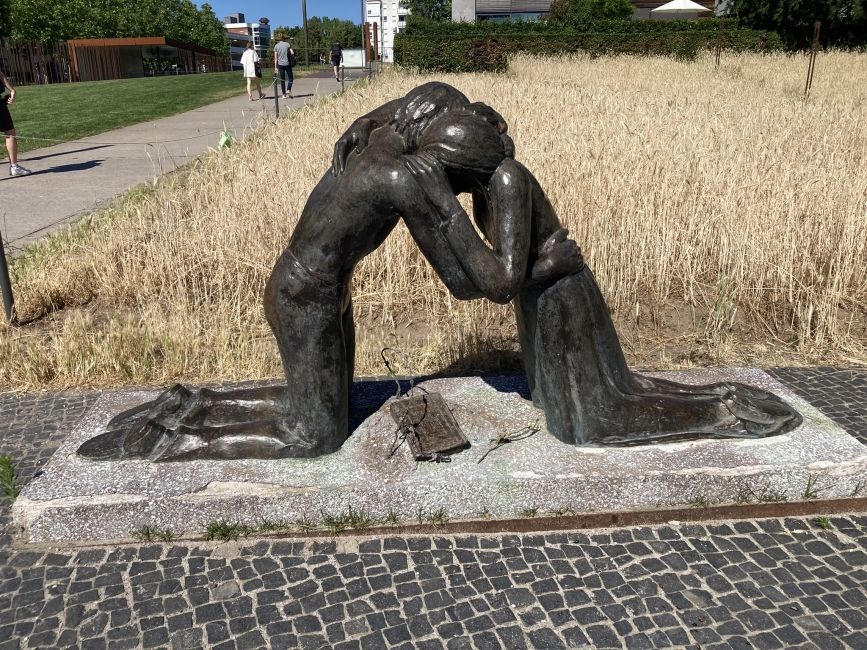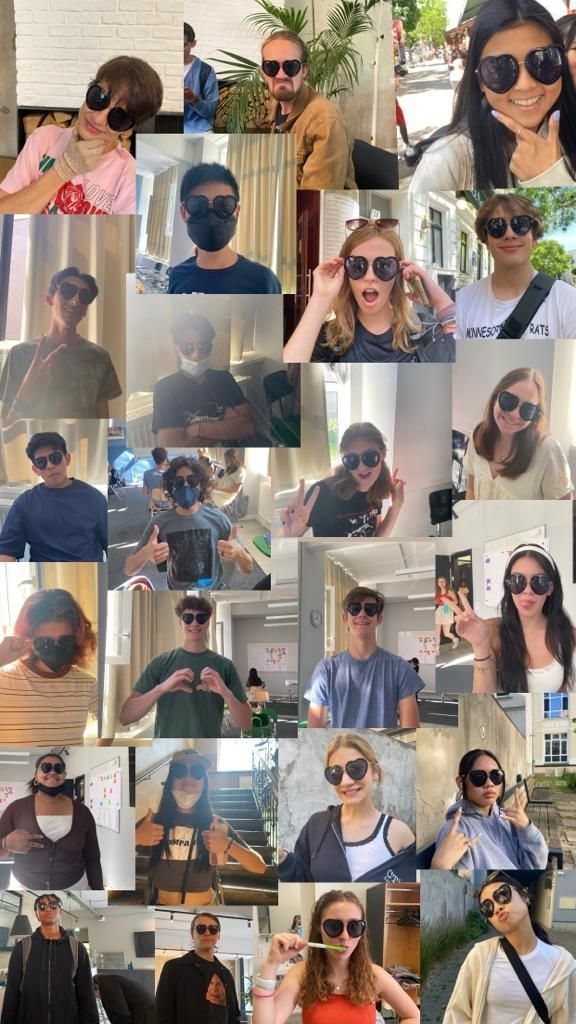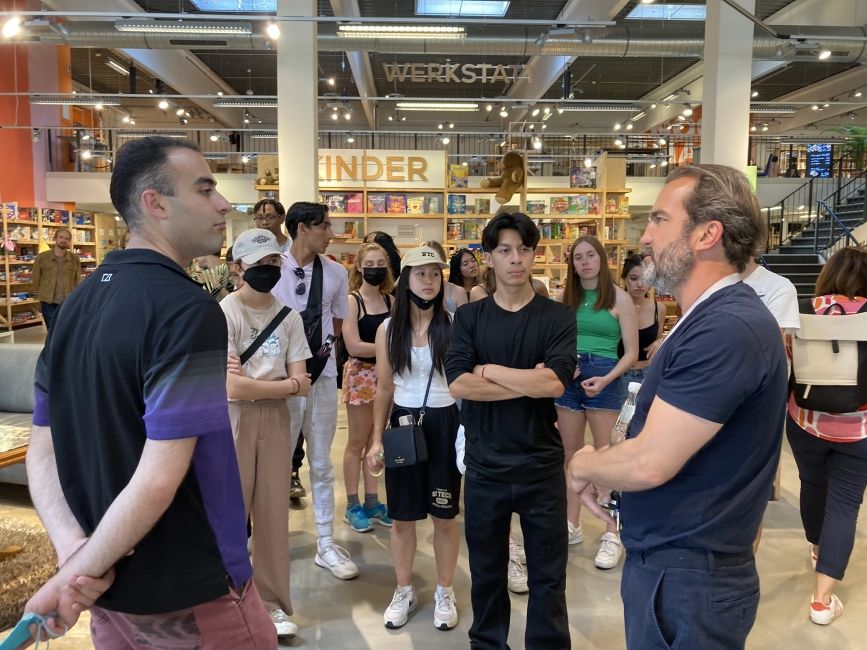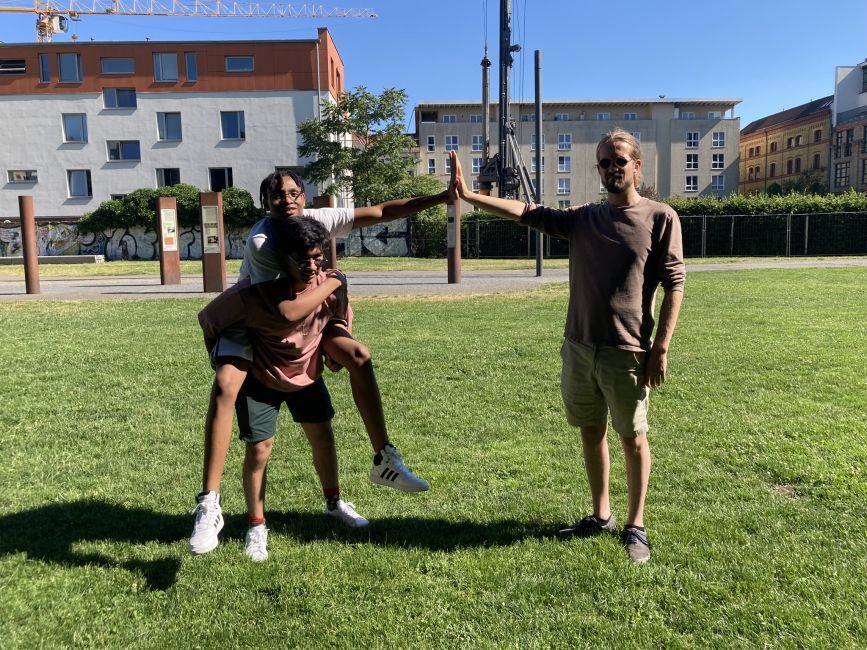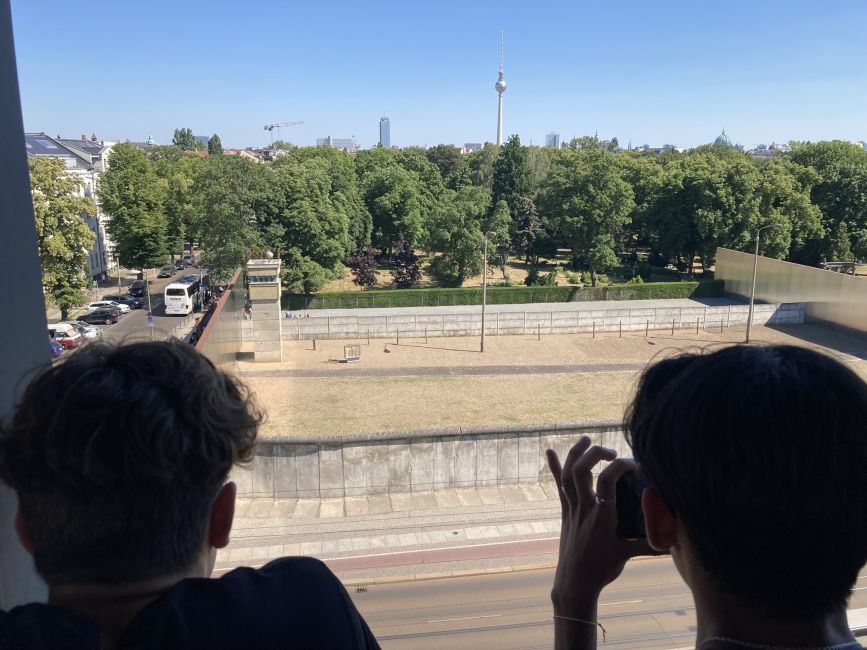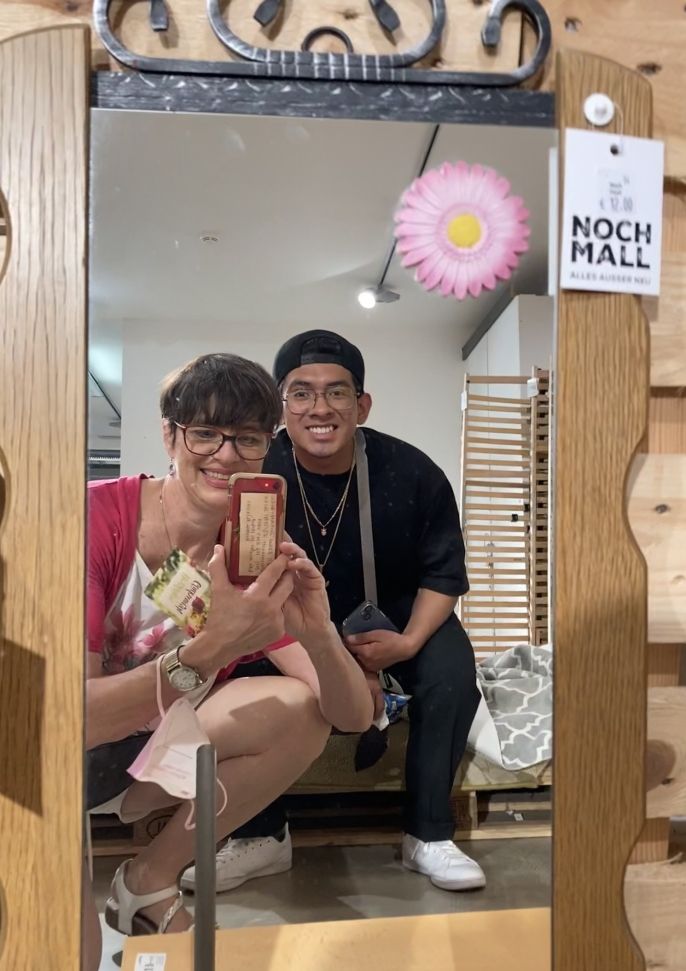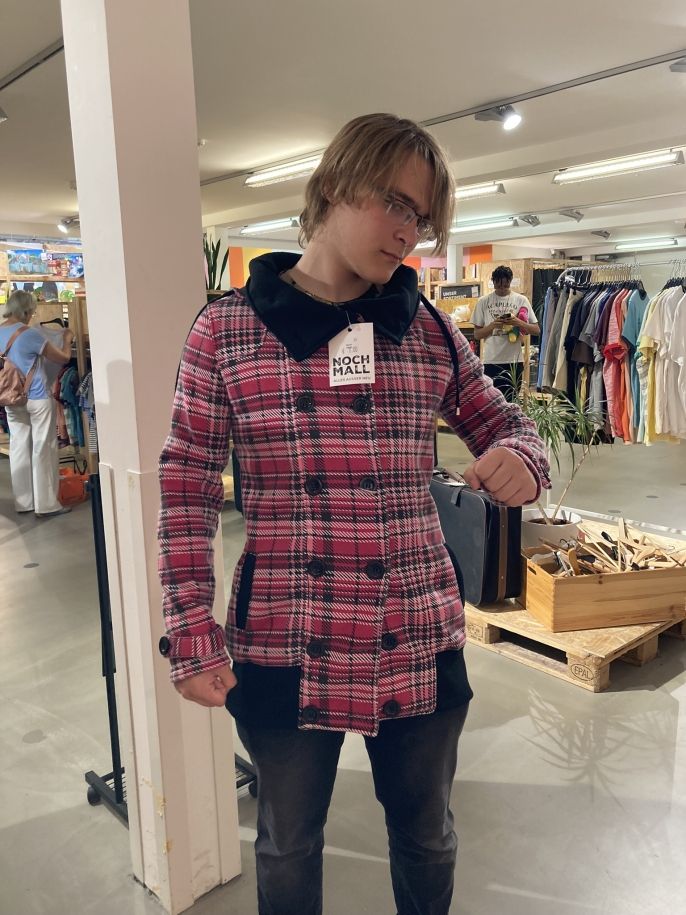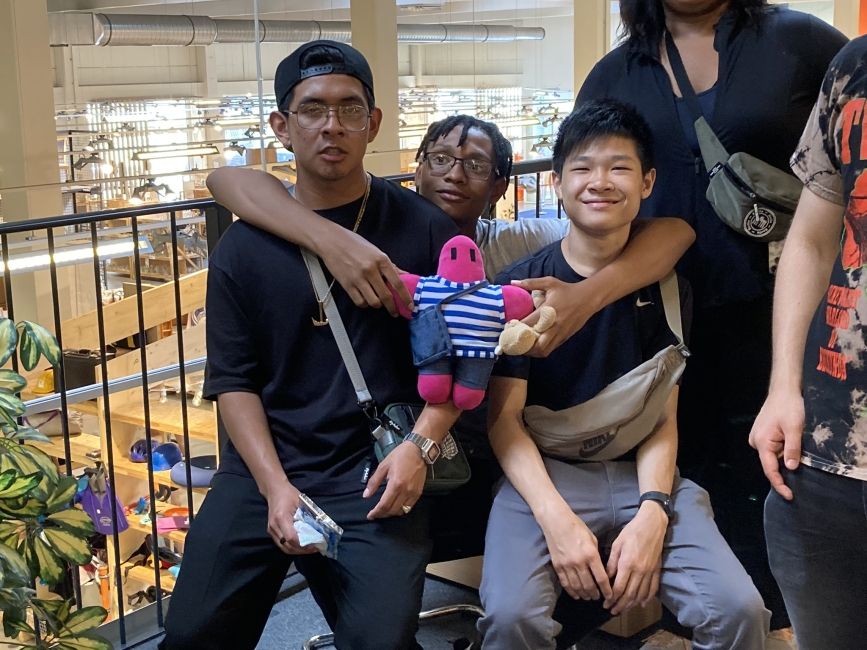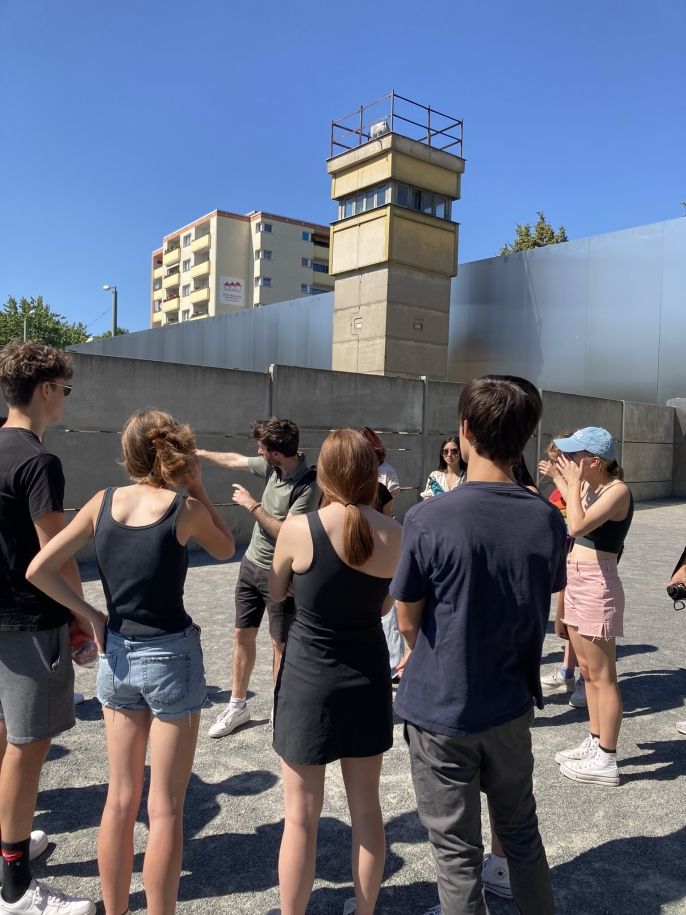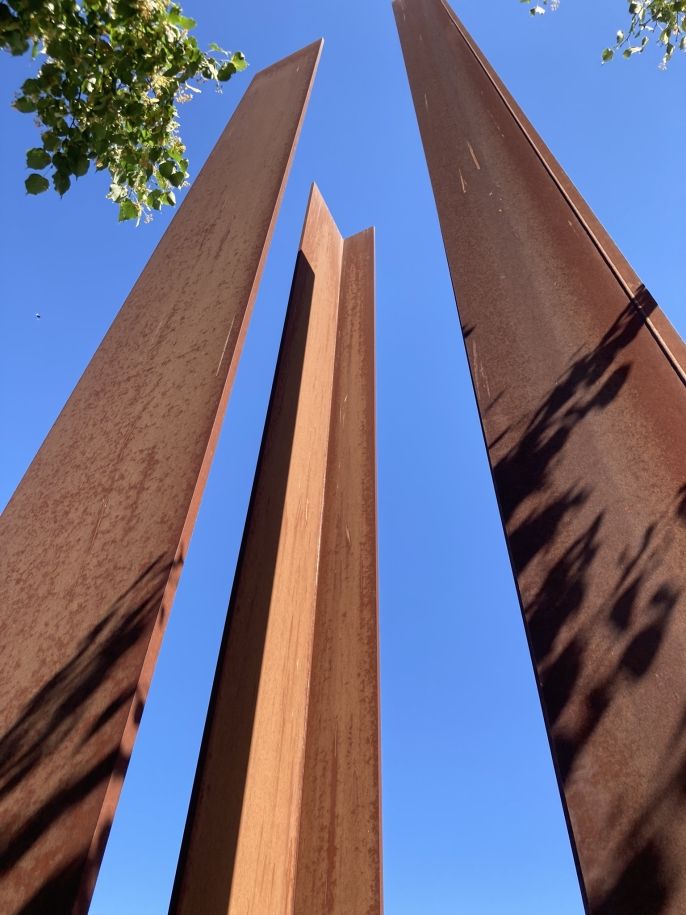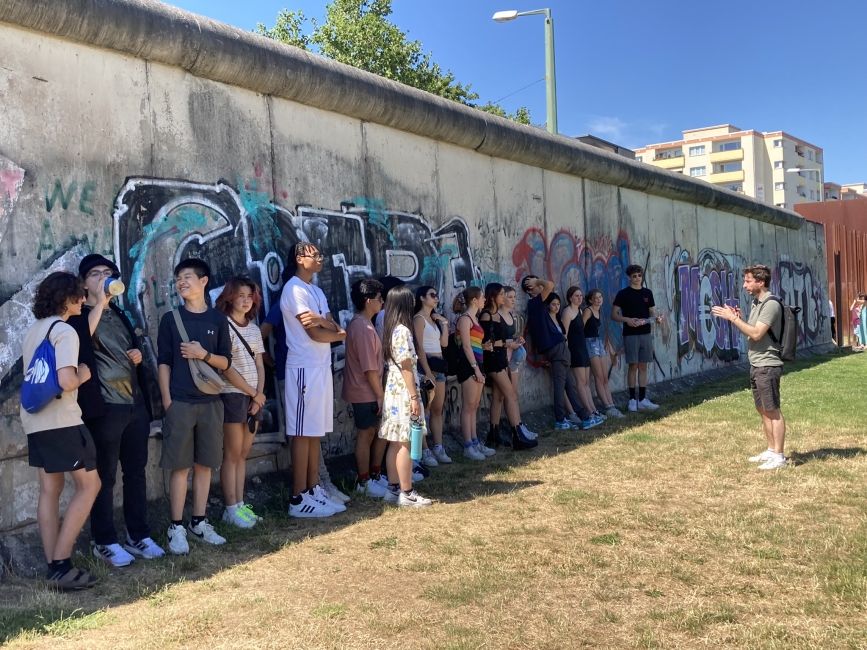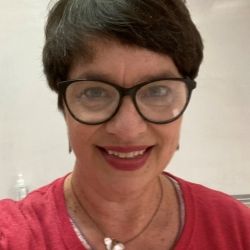Going deeper at the Berlin Wall Memorial
It came to all of us in the first few days of this second week: our trip is nearly half over! This realization was not a happy one. No one is ready for this program to be over. In their weekly interviews, students echoed a common theme: their friendships have really deepened since they met. Many of us are wishing we had four weeks here, like the Language and Culture folks! Our recognition that goodbyes are within sight just as we're becoming oriented and feeling at home is making us cherish each day more.
We are also beginning to notice the wisdom of the organization of our schedule, deftly arranged by our Program Coordinator, Suel. Getting to know Berlin requires orientation first, learning the layout of the city and then returning to dig in more deeply and explore the significance of each area. During week 1, our first outing was a walking tour of the heart of Berlin starting at the Brandenburg Gate. A short distance away, we stood outside the Topography of Terror, described eloquently in program leader, Tommy Herz's recent blog. This somber and powerful exhibition is tucked under the shadow of one of the few original standing sections of the Berlin Wall. So, we had "seen" the wall, but just barely. On Thursday, we returned for take two; it was time to learn more of the history and background at the Gedenkstätte Berliner Mauer (the Berlin Wall Memorial).
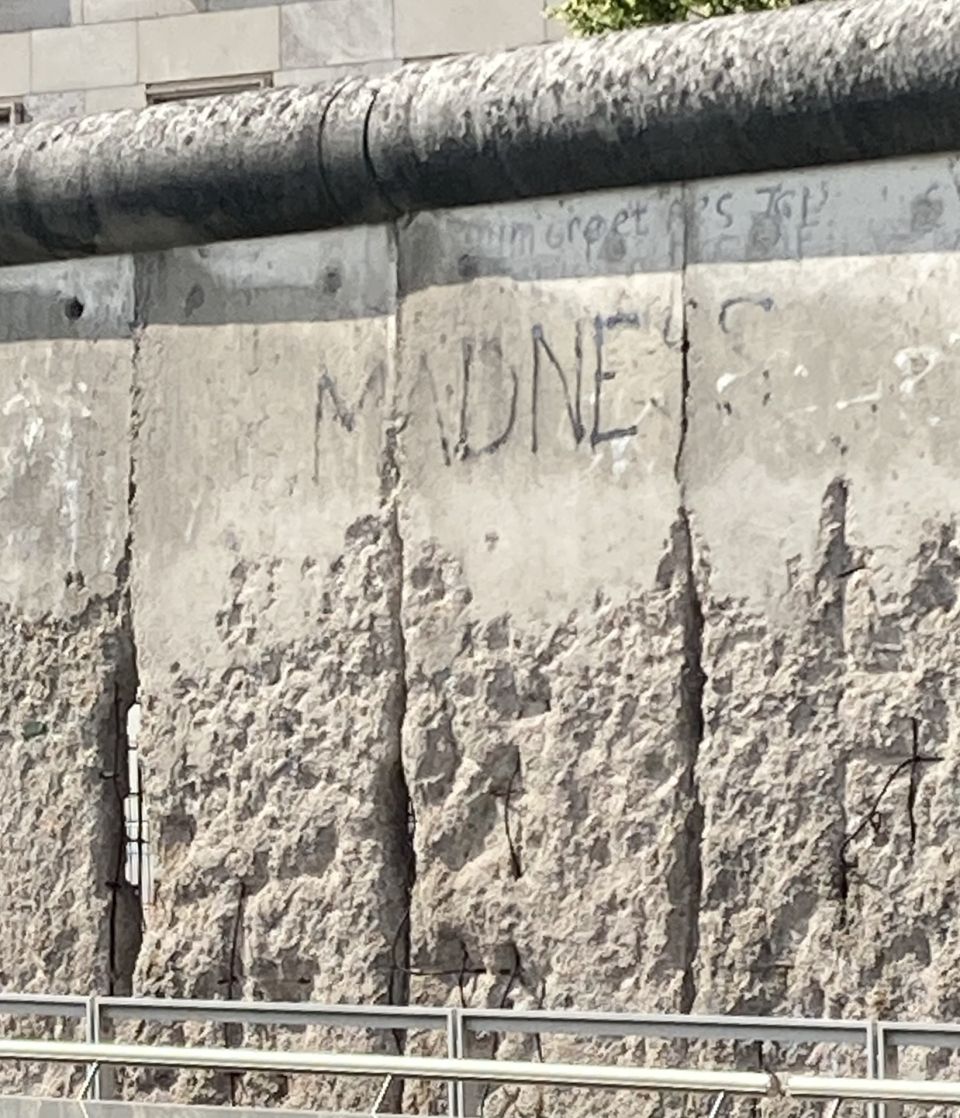
Our tour guide described two vastly different realities of post-war Berlin and the complex political and economic influences that affected the divided city: on one side, the economic post-war boom of West Berlin and, inversely, the bleak economic reality in East Berlin. Before the wall was erected, some 1.5 million East Germans defected to the West by just walking into West Berlin between 1949 and 1961. That ease of departure in search of a new life changed nearly overnight with the decision to erect a massive wall to "protect" East Berlin and East Germany from what was called, according to the propoganda, fascist influences. The initial barrier was barbed wire, but this evolved into a complex system of obstacles: first, an initial fence, and then searchlights, attack dogs, mines, over 300 watch towers, guards with machine guns all within a space called the "Death Strip" before the main concrete barrier known as the Berlin Wall.
A panoramic view of the Death Strip
We listened to heartwrenching stories of dangerous attempts to flee, some ending in capture or imprisonment, others, in death, like the soldier who had managed to navigate the Death Strip and climb onto the wall, but who froze halfway up. He was shot to death by a guard in plain site of West German guards and shocked onlookers. Some attempts were successful. There was the unlikely story of two families who managed to build a hot air balloon to carry them up and over the wall, an enormously improbable and risky gamble that paid off. Or the soldier whose dash to freedom by jumping over barbed wire was captured on camera and became an iconic photograph.
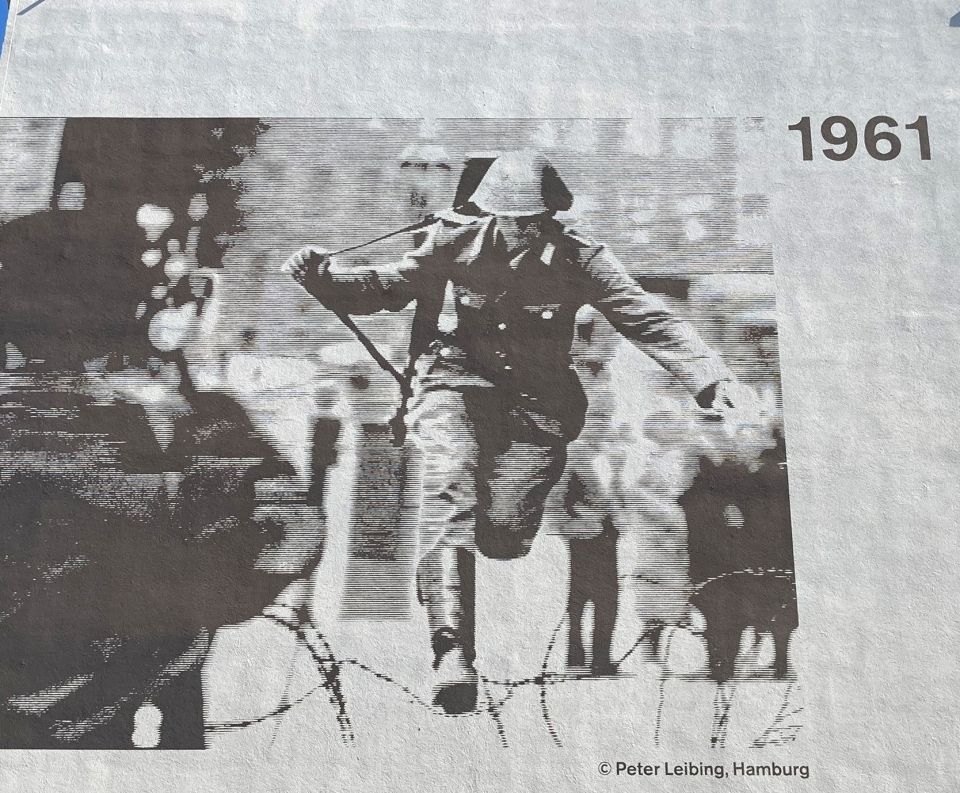
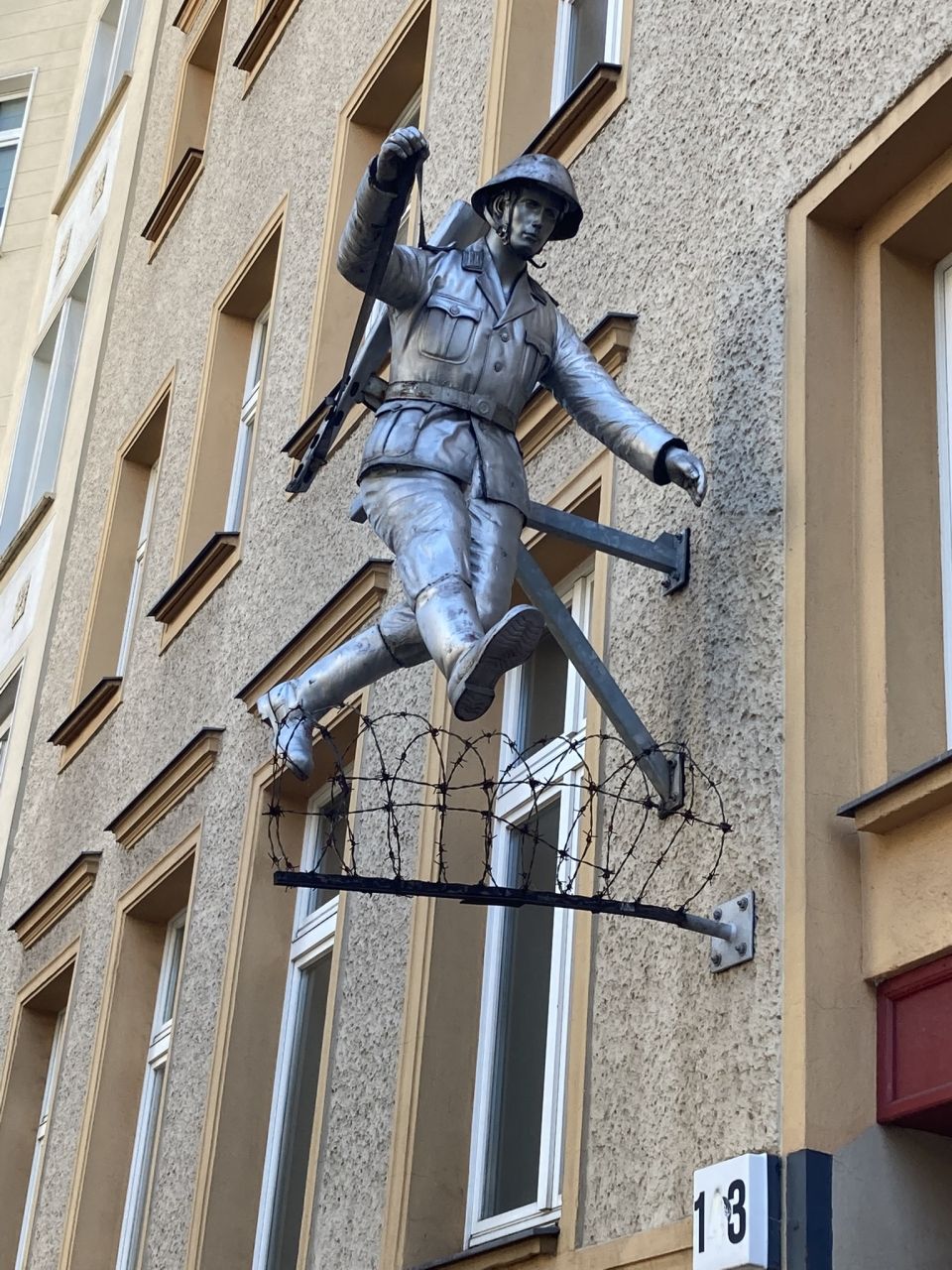
We have been immersed in history during our stay in Berlin, and the lessons we are getting in these excursions have been powerful; we are asked to reflect deeply on the difficult parts of world history. Yet Berlin has also introduced us to amazing culture, ground-breaking innovations and bold initiatives in government and social policy. The wonder of Berlin can be found in its depth and breadth as a major international city. We have seen history and art from decades to centuries to millenia old; we have eaten at restaurants started by refugees and immigrants, we have visited architectural marvels that function also as government buildings, and we have met social entrepreneurs working toward sustainability through recycling and refurbishing clothes. In between this busy schedule, there have been many opportunities for fun as you will see in our gallery of pictures, including more pictures from Nochmall, the non-profit which refurbishes used products for resale in order to increase sustainability. (Nochmall is a play on the German term for "once again", noch mal, and the word mall, a shopping center). As we look forward to a day trip to Potsdam and our final, third week, the students are hard at work on their group projects under the tutelage of their professor of the global entrepreurship class, Paul Ovtschinnikow. The projects will be presented at our final awards night that is just a week away. Only *one week* left?! Please don't remind us. We're in love with this place and we're not ready to contemplate saying goodbye :-(
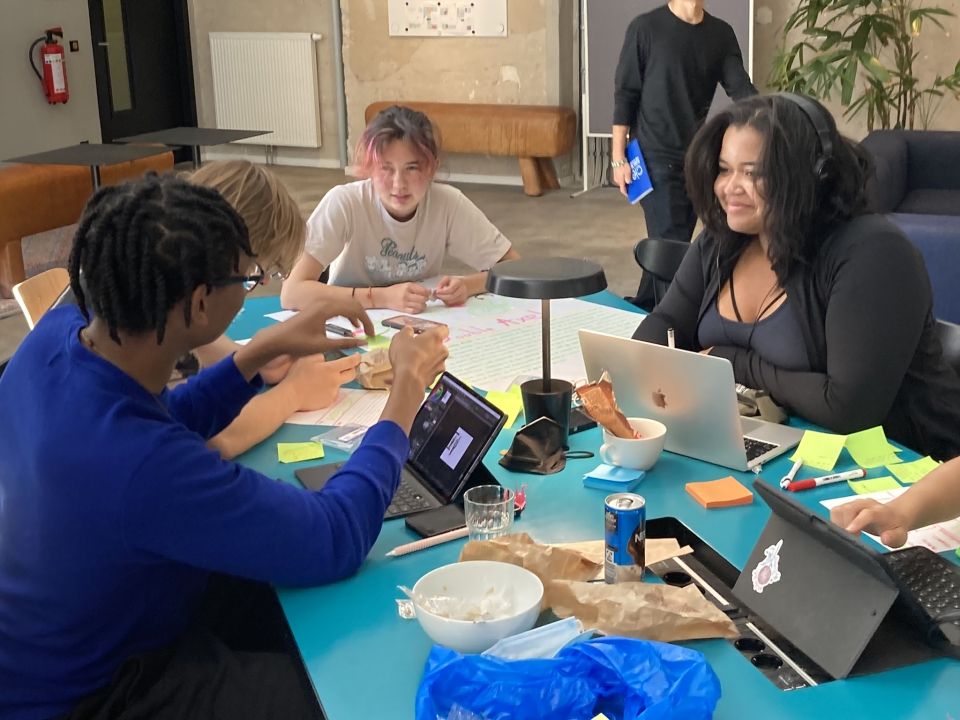
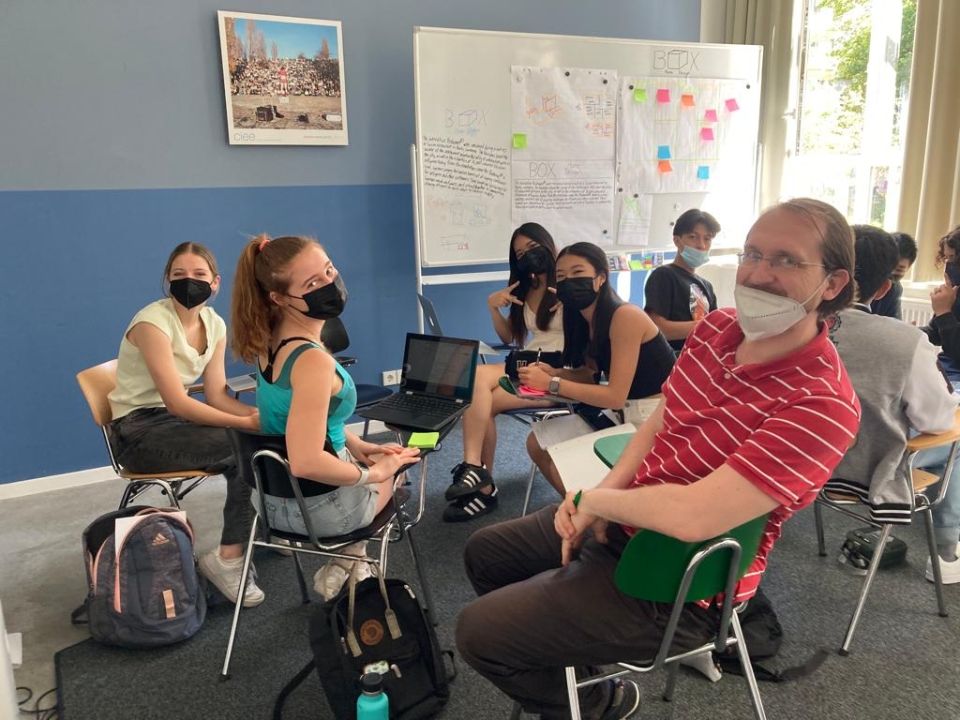
Related Posts
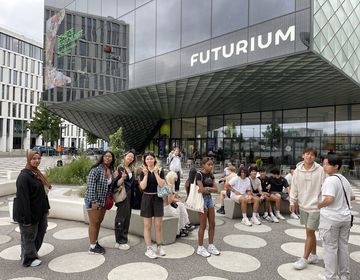
Futurium: A Glimpse Into Tomorrow
CIEE Entrepreneurship students visited Futurium today. Berlin’s Futurium offers a captivating portal into potential tomorrows. This interactive museum is a masterclass in the convergence of science, technology, and society, inviting... keep reading
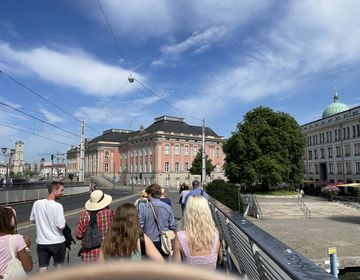
Potsdam: Where History Meets Hip
A welcome respite from the entrepreneurial grind, CIEE students traded their laptops for train tickets, embarking on a day trip to Potsdam. Known primarily for its opulent palaces and meticulously... keep reading
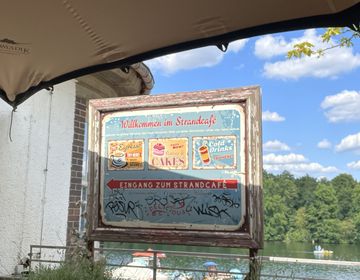
From Product Pitches to Poolside: A Berlin Balancing Act
The art of product development is a delicate dance between creation and critique. Today, CIEE students in Berlin found themselves in the midst of a lively pas de deux as... keep reading
